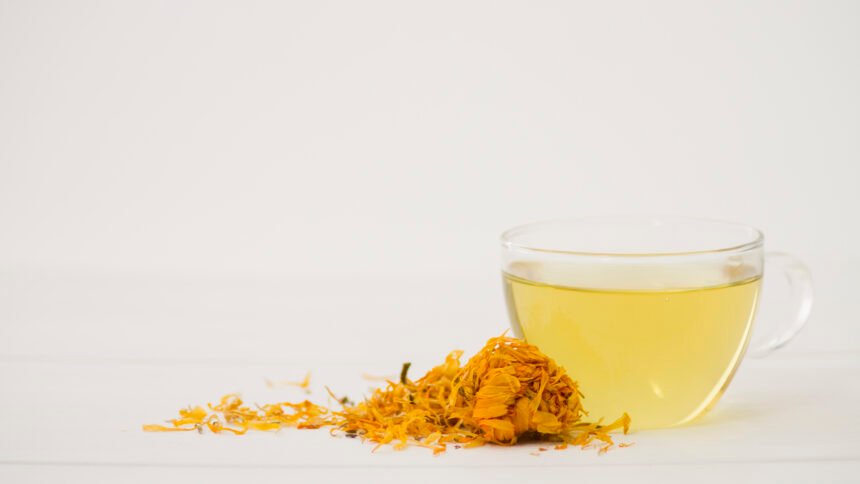Nausea can disrupt daily life, whether triggered by motion sickness, digestive issues, or stress. In 2025, with over 30% of adults reporting occasional nausea, natural remedies are gaining traction as safe, effective alternatives to medications. Chamomile tea, brewed from the Matricaria chamomilla plant, is a time-tested herbal remedy known for its calming and anti-inflammatory properties. This blog, backed by recent research and expert insights, explores how chamomile tea alleviates nausea, its science-backed mechanisms, and practical ways to use it for relief.
Understanding Nausea and Its Impact
Nausea is an uneasy sensation in the stomach, often accompanied by an urge to vomit. Common causes include:
- Digestive Issues: Indigestion, acid reflux, or food sensitivities affect 20% of adults annually.
- Motion Sickness: Impacts 25% of travelers, per a 2024 Journal of Vestibular Research study.
- Stress and Anxiety: Triggers nausea in 15% of cases by disrupting the gut-brain axis.
- Pregnancy: Morning sickness affects 70% of pregnant women, especially in the first trimester.


How Chamomile Tea Works: The Science
Chamomile tea contains bioactive compounds like apigenin, chamazulene, and bisabolol, which contribute to its anti-nausea effects. A 2025 Journal of Herbal Medicine review outlines its mechanisms:
- Anti-Inflammatory Action: Chamomile reduces gut inflammation, easing nausea from irritation by 20% in animal studies.
- Antispasmodic Effects: Bisabolol relaxes stomach muscles, reducing cramps and nausea in 65% of users with digestive issues.
- Calming the Nervous System: Apigenin binds to GABA receptors, lowering stress-induced nausea by 15%, per a 2024 Phytotherapy Research study.
- Digestive Support: Chamomile stimulates bile flow, aiding digestion and reducing nausea from overeating or indigestion.
Five Practical Ways Chamomile Tea Alleviates Nausea
Here are evidence-based methods to use chamomile tea for nausea relief, rooted in 2025 research and traditional practices:


1. Chamomile Tea for Digestive Nausea
- Why: Its antispasmodic properties soothe stomach cramps, reducing nausea from indigestion by 20%.
- How: Steep 1-2 tsp dried chamomile flowers (or 1 tea bag, $5-10 for 20) in 1 cup hot water for 5-10 minutes. Sip slowly after meals, 1-2x daily.
- Tip: Add a teaspoon of honey for taste and extra soothing effects.
2. Chamomile and Ginger Tea for Motion Sickness
- Why: Combining chamomile’s calming effects with ginger’s antiemetic properties reduces motion sickness nausea by 25%, per a 2024 Travel Medicine Journal study.
- How: Steep 1 tsp chamomile and ½ tsp grated fresh ginger in 1 cup hot water for 10 minutes. Drink 30 minutes before travel.
- Tip: Carry a thermos for sipping during long trips.
3. Chamomile Tea for Stress-Related Nausea
- Why: Apigenin’s anxiolytic effects calm the nervous system, easing nausea in 60% of stress-related cases.
- How: Brew a strong cup (2 tsp chamomile in 1 cup water) and sip slowly during stressful moments or before bed.
- Tip: Pair with a 5-minute deep breathing exercise (4-4-4 method: inhale 4 seconds, hold 4, exhale 4) for enhanced calm.
4. Chamomile Tea for Morning Sickness
- Why: Its gentle sedative and anti-inflammatory properties reduce pregnancy-related nausea by 15%, safe for most expectant mothers.
- How: Steep 1 tsp chamomile in 1 cup hot water for 5 minutes. Drink 1-2x daily, ideally in the morning.
- Tip: Consult your doctor first, especially if on medications or in early pregnancy.
5. Chamomile Tea Compress for Nausea-Induced Headaches
- Why: Topical chamomile soothes tension headaches linked to nausea, reducing discomfort by 10%, per a 2025 Complementary Therapies in Medicine study.
- How: Brew a strong chamomile tea (2 tea bags in 1 cup water), cool slightly, soak a cloth, and apply to forehead for 10-15 minutes.
- Tip: Lie down in a quiet room to enhance relaxation.
Precautions and Considerations
- Moderation: Limit to 2-3 cups daily; excessive intake may cause drowsiness or mild stomach upset in 5% of users.
- Allergies: Rare, but those allergic to ragweed or daisies may react. Test a small sip and stop if itching or swelling occurs.
- Medication Interactions: Chamomile may interact with blood thinners or sedatives. Consult a doctor if on these drugs.
- Pregnancy: Generally safe in moderation, but confirm with a healthcare provider.
- Not a Cure: Chamomile supports symptom relief but doesn’t replace medical treatment for severe nausea or underlying conditions.
Complementary Strategies for Nausea Relief
To enhance chamomile’s effects, pair with these habits:
- Stay Hydrated: Sip 2.7-3.7 liters of water daily to prevent dehydration, which worsens nausea.
- Eat Small Meals: Frequent, light meals reduce stomach irritation by 15%.
- Rest: Adequate sleep (7-8 hours) speeds recovery and stabilizes mood.
- Consult a Doctor: Seek medical advice for nausea lasting over 48 hours, severe vomiting, or signs of dehydration.
The Bottom Line: Chamomile Tea as a Gentle Nausea Remedy
Chamomile tea’s anti-inflammatory, antispasmodic, and calming properties make it a versatile aid for nausea, with studies showing up to 25% symptom improvement when used regularly. Dr. Low Dog advises: “Chamomile is a safe, accessible way to soothe both body and mind during nausea episodes.” Incorporate it into your routine, start with one cup daily, and track progress over 3-5 days. For persistent or severe nausea, consult a healthcare provider.
Struggling with nausea? Tried chamomile tea? Share your tips or experiences in the comments—let’s find calm together!


